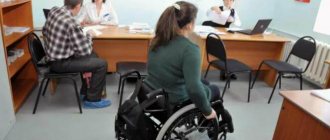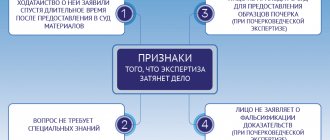The state has created an entire system of assistance for the social protection of those individuals who have persistent health problems, injuries, cannot work, and have limited opportunities for socialization. Its goal is to reduce the distance between a sick person and society. It consists of several components:
- establishing the fact of disability;
- determining the level of disability;
- solutions to ways of socialization of a disabled person;
- determining possible social government support;
- comprehensive social support.
ITU - what is it
To resolve some of these issues in relation to each specific person requiring state support, a medical and social examination (MSE) was created. Strictly speaking, ITU is a state examination designed to resolve the issue of establishing disability for a specific person.
Among the main tasks of carrying out MSA is determining the degree of damage to the basic functions of the body of a particular person, identifying possible ways of rehabilitation, and legal recognition of him as disabled.
Where can I get tested for disability?
In order for a person to officially establish his disability, he must contact the Bureau of Medical and Social Expertise, which is located at his place of residence. Such organizations can be either city or regional. All these offices are branches of the main ITU Main Bureau.
A person who needs this type of examination can undergo it at the office at the place of his registration or at the place of actual stay. In addition, if the ITU client is not satisfied with the commission’s decision and wants to appeal it, he can do this at the regional head office or at the Federal.
Is it possible to go to a location other than your place of registration?
Not everyone can pass the ITU, which is also called VTEC, in the region where they are registered. That is why the question of whether it is possible to undergo examination in another part of Russia is relevant.
Note! For the convenience of citizens of the Russian Federation, you can undergo a disability examination at any ITU bureau, where it is more convenient. In addition, such an examination can be passed even outside the Russian Federation.
ITU structure
For each specific person who needs to establish a disability, the examination is carried out at the ITU office at the place of residence. They are branches of the Main Bureaus located in the regions.
There are city and district branches of the Main Bureaus, where you should come with a referral and documents. A disabled person can apply to the ITU at his place of residence (this may be his place of residence) or at his location (if he has left the Russian Federation). For example, to conduct ITU in Moscow, you should contact one of the 95 branches of the “GB ITU in Moscow” (their addresses are posted on the official website of the Head Office).
In case of disagreement with the decision of the local branch, the person (or his guardian) can appeal it to the Head Office, as a rule, these are regional structures. Then the examination will be carried out here (in our example, this will be the ITU GB for Moscow).
The main structure is the Federal Bureau of ITU. In difficult situations, in case of disagreement with the decision of the Head Body, the examination is carried out here; its decision can be appealed in court.
The Federal Bureau of Medical and Social Expertise is subordinate to the Ministry of Labor of the Russian Federation.
Sentence or social assistance?
Voting is held at a meeting of the Bureau of Medical and Social Expertise. After discussion, the decision is made by a majority vote. Here, in the presence of the applicant or his legal representative, the decision is announced and explanations are given.
Based on the meeting and decision, an act is drawn up, which must be signed by all specialists participating in the bureau. The manager's signature and seal are required. The act indicates the reasons that influenced the adoption of a particular decision.
The decision depends not only on a citizen’s health examination. Living and working conditions, living conditions are studied. In case of serious impairment of body functions and loss of performance, the likelihood of a positive response increases.
The form for drawing up the act and certificate of medical and social examination is approved by the Ministry of Health. After conducting the MSA, the citizen is given a certificate reflecting the bureau’s decision.
If the answer is negative, at the citizen’s request, he may be given a certificate about the bureau’s decision and the reasons for the refusal. All examination reports are stored in archives for at least ten years.
In order for a citizen who has temporarily or permanently lost their ability to work to receive government assistance, they need to go through the ITU procedure. If the answer is negative, you can appeal to a higher bureau.
Tasks and powers
One of the main functions of the ITU is to establish a disability group. This procedure is a factual overall assessment of the health status of the person contacting the bureau.
To conduct examinations of persons with various diseases, special expert groups have been created:
- mixed-profile groups will examine patients with general diseases;
- Special groups are created to consider issues related to persons aged 18–1 years.
Specialized groups have also been created for examination:
- patients with tuberculosis;
- persons with mental disorders;
- suffering from visual impairment.
The examination will be carried out by an expert group depending on the disease that the patient has.
When passing the ITU, the issue of rehabilitation is also resolved and an individual rehabilitation program (IRP) is issued (or adjusted).
About disability groups and criteria for their establishment
The ITU examination involves determining the disability group (its extension) or refusing to establish it. There are 3 disability groups of all types, and there is also a “disabled child” category. The ITU Bureau can set disability for 1 or 2 years, 5 years or for life (this is determined by the relevant criteria of the Rules).
The group specification contains a detailed list of health disorders of the person being examined. These criteria form the basis for establishing the disability group by the examination.
For example, when persistent moderate impairments lead to a decrease in the ability to perform previously familiar professional duties or to a decrease in the volume or intensity of work, and also cause the inability to continue activities in the main profession, but at the same time the person remains able to perform duties of a lower qualification under standard conditions. This indicates the presence of 1st degree limitation of the main categories of life activity, and there are grounds for assigning a III disability group.
If persistently expressed disorders of body functions arise, requiring special devices or the creation of specific working conditions or any special technical equipment to perform work activities. funds or assistance from outsiders, they qualify as the second degree of restriction. In this case, disability group II is assigned.
When persistently expressed health disorders are detected, leading to the impossibility (even contraindication) of work or absolute inability to do it, grade 3 occurs. These are signs of disability group I.
A separate category of “disabled child” is established if a person aged 1 to 18 years has signs of any degree of limitation in the main categories of life activity.
The assignment of the group depends on the general health of the person undergoing the examination. Here, many factors are taken into account that limit the main categories of life. Among them will be his ability to self-care, orientation, communication, movement, ability to control himself and learning ability (which is very important for children and young people).
When all these factors are taken into account, the group will be established. The criteria themselves are approved specifically for each group and have uniform, very clear recommendations for all ITU branches of Russia.
About the possible purposes of the examination
In addition to the main goal - maximum adaptation of a disabled person into society - carrying out MSE also pursues more specific goals. These include:
- determination of a person’s disability group (category “disabled child”);
- establishing the degree of loss of professional skills and ability to work;
- development (or its correction) of an individual rehabilitation program;
- development (or its correction) of a rehabilitation program for the victim.
The commission may also be held to establish:
- stages of loss of professional skills from an occupational disease or industrial accident;
- the need for outside care of a close relative, a citizen undergoing military service;
- signs of persistent health disorder for employees of internal affairs bodies and other structures.
How to get directions
To undergo the examination, you need to receive a referral (to the patient himself or his guardian). This can be done in the following ways:
- Contact a Russian healthcare facility where the person requiring examination is being observed or undergoing treatment.
- Apply to the Pension Fund office. Here you will need to submit the necessary medical documents certifying your illness, injury or disability.
- Apply to the social protection authorities, and there must be signs of a person’s disability and his need for social protection.
The medical institution issues a referral in form No. 088/u-06. In which there will be information about the state of health of the person referred and the recovery capabilities of his health, about the rehabilitation measures taken, their results, and necessarily the purpose for which the person is sent to MSE (disability and group are not indicated in it).
Social protection authorities and the Pension Fund of the Russian Federation issue a referral in a form approved by order of the Ministry of Health and Social Development of the Russian Federation dated December 25, 2006 No. 874, which contains information about signs of disability (usually based on a fact established by them) and the need for social protection, the purpose of the referral.
If a person has been denied a referral by all of the listed institutions, he has the right to appeal directly to ITU branches.
Why is such research needed?
Medical and social examination appeared on the basis of Federal Law No. 181, adopted in 1995. This study was introduced for the following reasons:
- the status of a disabled person must be officially confirmed, including the degree of impairment of his health;
- identifying deviations in a person’s health helps to establish his legal status;
- ITU is needed for social protection of the rights of people with disabilities;
- for the use of restorative procedures.
ITU is designed to determine the presence or absence of disability in a citizen. The certificate documents the outcome of this event. Limitation of the capabilities of a citizen who is recognized as disabled may be associated with various types of deviations from the norm:
- mental;
- physical;
- mental (emotions, will, memory, thinking, speech, etc.);
- sensory (hearing, vision, touch and smell).
Depending on the type of deviations and limitations, a person’s performance is determined. With the help of such an assessment, his need for social protection is determined.
What other documents are needed for examination?
Documents are attached to the received referral. Their list will depend on the purpose for which the referral is issued. And you can get it along with the direction.
Common to all types of examination will be:
- a written application for an examination from the person who requires it;
- Identity document of the disabled person and his guardian (if available). For children under 14 years of age, documents of one of the parents are required;
- medical certificate confirming health problems.
Most likely, you will also need the following documents:
- Medical outpatient record, examination protocols (ultrasound, MRI, CT) and x-ray images, hospital extracts (any medical documentation from healthcare institutions in the Russian Federation confirming health problems).
- A copy of the work book (certified by the HR department) or the original (for non-employees).
- Education documents (if available).
- Production characteristics for ITU (has an approved sample), this indicates working conditions, the length of the working day and the nature of the work performed, how the person copes with his duties.
- For children and students, pedagogical characteristics (drawn up in the usual form).
- For persons re-passing the ITU, this is a certificate of disability (original).
- YPRES.
Medical and social examination: procedure
Let's figure out how the MSEC commission goes and where to take it.
In order to undergo such an examination, a person who wants to register a disability must receive a referral. If the patient cannot do this himself, then it can be given to his guardian. You can receive a referral for examination using the following methods:
- By contacting the medical institution where the person is being treated or is registered.
- By writing an application to the Pension Fund and bringing medical papers to its office confirming the presence of health problems.
- By contacting the social security authorities. In this case, you also need to submit a certificate from the hospital to this organization in form No. 088/u-06.
More information about why ITU is needed and by which bodies it is carried out is described in this article. We also advise you to read about the criteria and classifications that are used to determine disability.
Information about the peculiarities of re-passing the commission is also useful.
The Pension Fund and Social Security can issue a referral to the ITU in accordance with Order of the Ministry of Health and Social Development No. 874. If all of the listed organizations refuse a person a referral, then he can file a complaint with the ITU office.
The next step in the examination procedure is collecting documents. Moreover, a list of them is most often issued along with the referral. This list includes:
- A document proving the identity of a person and his guardian. If a child under 14 years of age needs a disability, then his birth certificate and the passport of one of his parents are needed.
- All medical papers that confirm health problems. These include the patient’s outpatient card, the results of his examinations, as well as extracts from the hospital.
- A certified copy of the work book or its original.
- Education papers (certificate, diploma).
- Characteristics of the production where the person requiring certification works. This certificate is issued according to a specific template. Such a description should contain information about working conditions, the length of the working day, as well as data on how the person copes with his responsibilities.
- If a medical and social examination needs to be carried out on a child, then he needs to obtain a reference from a school or college.
- What if the examination is repeated? Here you will need to attach the original disability certificate to these papers.
Then, you need to write an application to the bureau and register it along with the referral and all the necessary papers. Registration of such an appeal is made on the day it is written.
Reference! If a person has not provided all the necessary documents to the bureau, he is given 10 days to bring them. If he managed to provide them within the given period, then the disability fee will be charged from the date of the first application.
After ITU bureau staff have examined all the documents, they will set a time for the examination and send an invitation to the applicant. He is sent within 24 hours after the decision on the date of the examination. Such an invitation must indicate the date, time and address of the organization that will conduct the examination.
After receiving an invitation from the bureau, the person needs to appear at the place of examination. If the applicant cannot come for the examination himself for health reasons, then the organization’s employees can come to his home or hospital. In addition, in some cases, a decision can be made even without the presence of a person , based on the documents provided.
During the ITU, a person wishing to formally register a disability undergoes an examination. When conducting such an examination, bureau employees evaluate and study a person’s everyday, labor, psychological and social abilities. Everything that happens during the examination must be recorded in the protocol.
Who are the legal representatives
In some cases, a person who requires the establishment of disability is due to his illness and cannot be fully responsible for his actions or is physically unable to collect certificates and go to authorities. This will be the basis for their interests to be represented by legal representatives. They may be parents, children, other relatives, spouses, or strangers caring for the disabled person (in this case, a guardianship decision will be required).
When examining children under 14 years of age and adolescents under 18, their legal representatives will be their parents. The law provides for their mandatory participation in the process (without them the examination will not be carried out). If the child does not have parents, then guardians replace them.
In all these cases, legal representatives for ITU are an important component of the process. They must present documents that certify kinship or marriage, and can carry out a number of actions for the patient. So, they collect the necessary certificates, bring the patient for examination, and organize the commission to go home if it is impossible to deliver him. In fact, they represent the interests of their ward at the ITU.
About the results
During the examination, a protocol is kept. Then an inspection report is drawn up, which consists of 2 parts. It is stored for 10 years. The person in respect of whom the examination was carried out is given:
- Help. It indicates the disability group, the cause and the period for which the disability was established, and there must be a link to the examination report and its details.
- Individual rehabilitation program.
An extract from the act, which must be drawn up, is sent to the regional branch of the Pension Fund no later than within 3 days.
If a person disagrees with the results of the examination, he must write a statement to the same regional or head office no later than 1 month from the date of receipt of the certificate. The period during which the re-examination must take place is 1 month.
If you disagree with the commission's conclusions, you can also go to court.
Making an expert decision
After conducting all the necessary examinations and studying documents, the commission begins to make a decision. This procedure takes place in the form of discussion and voting. The members of the commission make their decision by a majority vote.
After this, it is announced in the presence of the person who underwent the ITU, and all the specialists who took part in the examination. Such a decision must be made no later than 30 days after the date of filing the application.








